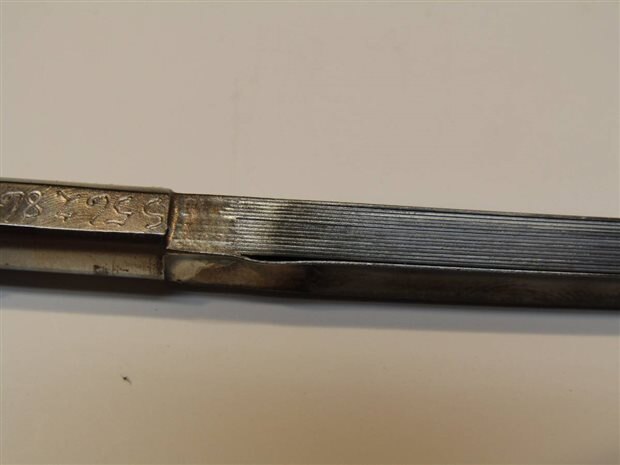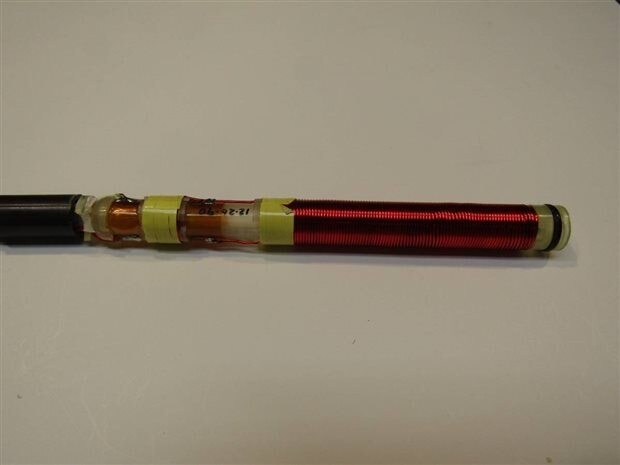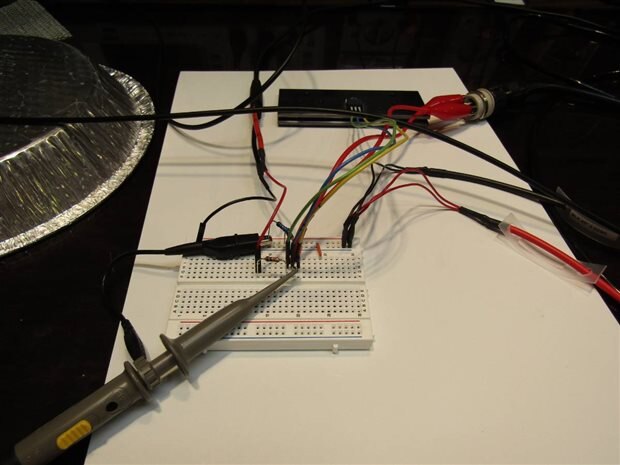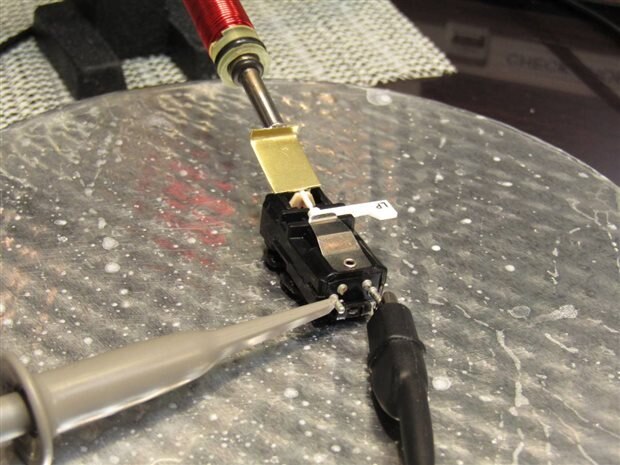In honor of tariq.ahmad 's emphasis on magnetism this month, I thought I would do a little experiment involving the Magnetostrictive Phenomenon. Magnetostriction is a property of a ferromagnetic material whereby it changes shape when it is subjected to a magnetic field. Anyone who has worked with transformers is familiar with the low frequency 50 or 60 Hz hum that can usually be heard coming from the transformer. This is an undesirable magnetostrictive effect that is causing the hum and a subsequent loss of energy in the transformer. On the other hand if you have been to the dentist and had your teeth cleaned by a hygienist using a device called a Cavitron you may have also experienced a desirable magnetostrictive effect. Since I have many of the parts and pieces used in these dental Cavitrons it seemed like a good experiment to set up some parts for a little demonstration.
The first piece of hardware is called an insert by the dentist but it is really a bundle of special alloy metal laminates that have been processed to augment their magnetostrictive properties.
I have added the brass plate to the tip of the insert for the purposes of this experiment. In the dental office there would be a stainless steel hook that would be be used to remove scale from your teeth while the tip vibrates at 30 kHz. The second picture is a closeup showing the laminates which work to mechanically amplify the magnetostrictive effect.
Next we have a coil of wire that will produce the magnetic field that will act on the insert.
I have removed the cover of this cavitron handpiece so you can see the internal coil that produces the electromagnetic field to drive the insert. While it is not visible there is actually a second higher impedance coil under the yellow tape on the left end. In the cavitron machine this higher impedance coil is used to adjust and lock the frequency of the oscillator so that it stays in resonance. The cavitron machine also has coolant water fed to the handpiece that flows inside the plastic coil form and out the metal hook that is being used to clean your teeth. The water not only cools the coil and insert but it acts to flush away the debris that is being cleaned from the teeth.
Here is a picture of the insert and the handpiece together.
I am going to build a simple MOSFET circuit to drive the coil and then will use the bench signal generator to drive the MOSFET. While the coil and insert are designed to work in the 30 kHz frequency range, for the purposes of this experiment I will keep the frequency down in the audio range. I have brought an aluminum pie tin to the bench and it will be used as a sound board to enhance the sound from the end of the insert. I have also hooked up an old piezo electric phonograph cartridge to the second channel of the oscilloscope so that we can look at the mechanical output of the insert. The other channel of the oscilloscope will monitor the output of the MOSFET.
I have chosen 3 volts for the power supply to the handpiece coil and I have heat sunk the MOSFET after having smoked the first MOSFET that I tried since it did not have a heat sink and was powered with 12 volts. Here is the schematic of the driver circuit.
Here are a couple pictures of the experimental setup.
Just a quick still shot of the Oscilloscope
In the following video the bench power supply is delivering 3 volts and the circuit is drawing about 500 mA. The signal generator is supplying a square wave signal to the base of the MOSFET through a 1 K resistor and the Yellow channel of the oscilloscope is monitoring the output of the MOSFET. The Blue channel is hooked directly to the piezo element of the phonograph cartridge.
Piezo electric elements are also being used in recent years in place of the magnetostrictive ones in some brands of scalers. The name Cavitron is the proprietary brand of Dentsply and other companies will typically call their machines Scalers. Each technology has its own favorable and unfavorable aspects. I mention this since I am sure that most of you having learned about the use of magnetostrictive technology for cleaning teeth will undoubtedly call to make an appointment with your dentist as soon as possible so you can see first hand how the cavitron works.
John










Top Comments
-

dougw
-
Cancel
-
Vote Up
+6
Vote Down
-
-
Sign in to reply
-
More
-
Cancel
-

jw0752
in reply to dougw
-
Cancel
-
Vote Up
+6
Vote Down
-
-
Sign in to reply
-
More
-
Cancel
Comment-

jw0752
in reply to dougw
-
Cancel
-
Vote Up
+6
Vote Down
-
-
Sign in to reply
-
More
-
Cancel
Children